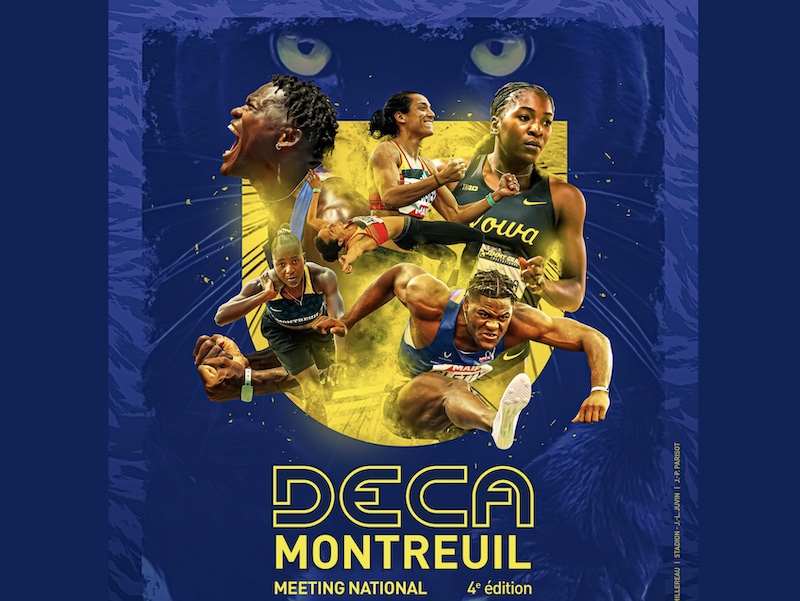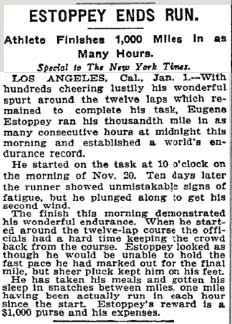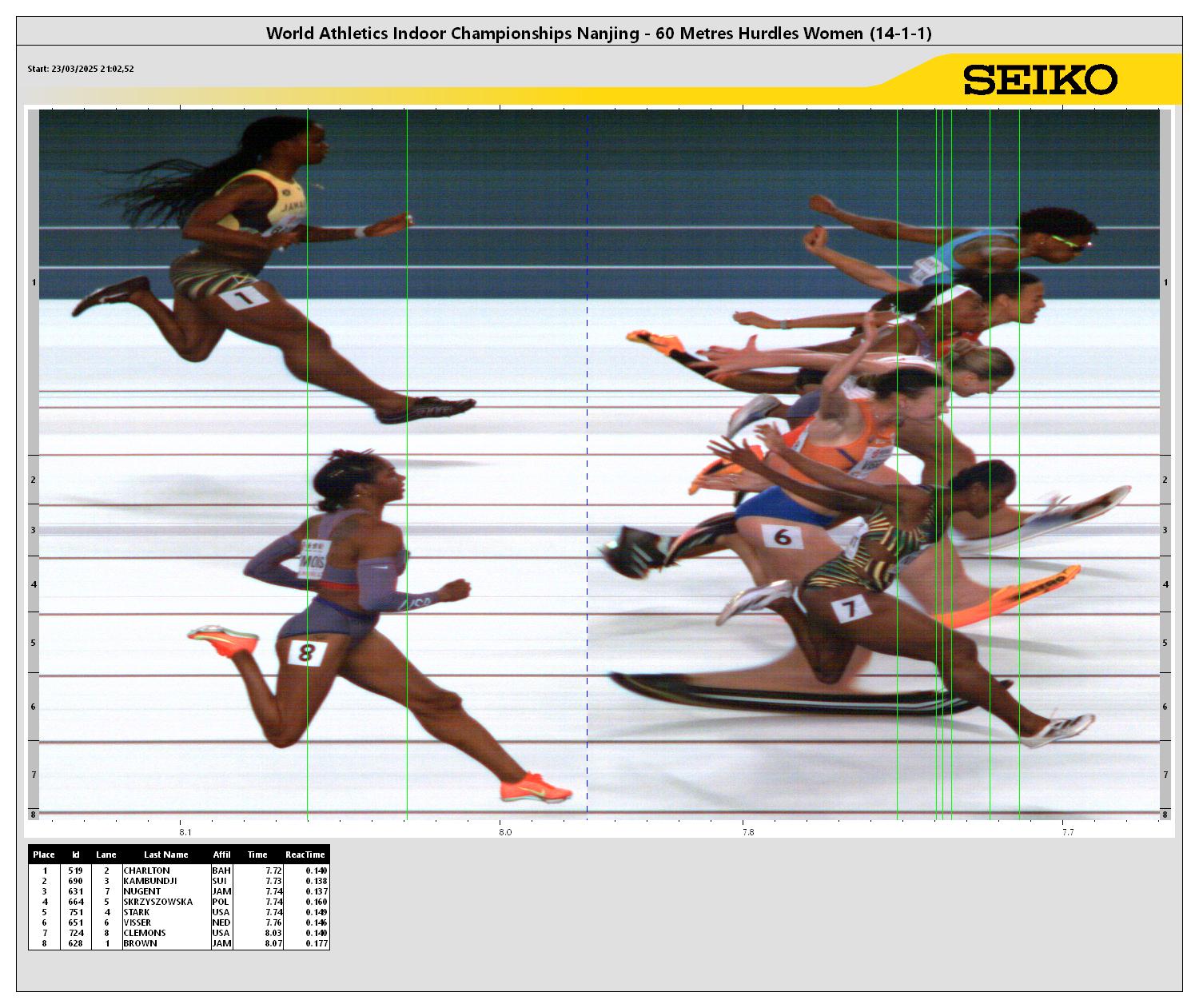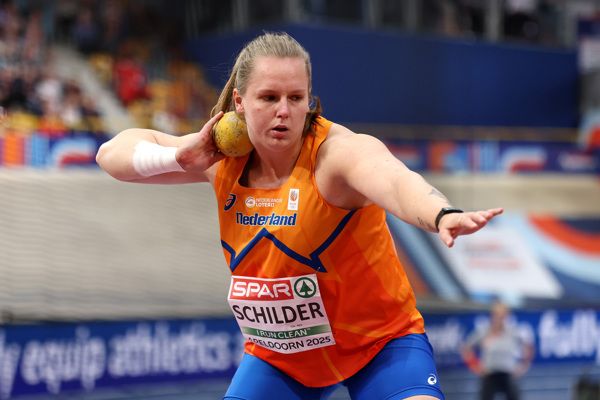After the excellent European Indoors, the World Championships in Nanjing were a pure let down. The majority of T&F stars snubbed the competition, preferring to concentrate themselves on the outdoors season, opening just one week later. The US representation was, well, not first rate. In some races more than half the posts were not filled. And many European countries present in Apeldoorn decided not to travel to China (which can be understood given the distance and the costs).
On the other hand in the men's pole vault the participation was excellent with 11 of the 2025 top vaulters present (only Nilsen and Lavillenie were absent). This makes the performance of E. Karalis even more impressive. He passed all heights up to 6.05 m on his first try and he gave a hard time to Duplantis. When the bar was raised at 6.10 and Duplantis succeeded in his second attempt Karalis, having missed twice, decided to carry his third jump to 6.15 m. Well, he missed, Duplantis, already ahead, succeeded and that was that, but seeing Manolo being a menace to Mondo was really something. (In fact Duplantis told the greek media that this was his toughest competition of the last years).
Ten years ago they were together on the U18 podium
And it's the first time in history where a jumper clears 6.05 m and does not get gold. S. Kendricks was third with a season best 5.90 m, while recent European co-champion M. Vloon was 4th with 5.80 m. E. Sasma redeemed himself after the Apeldoorn disaster, finishing 6th with 5.80 m, while the two french representatives were a pitiful sight, T. Collet jumping just 5.50 m and B. Thierry no-heighting at the initial 5.50 m.
But all was not bad for the french vault team: the solace came in the women's event. The Apeldoorn podium was reversed in order and M.J. Bonnin was crowned world champion. Once more, the US participation was below-par and the battle was between European jumpers, this time in the presence of last year's indoor world champion M. Caudery. But with a second clearance of 4.70 m she finished just outside the medals on count-back. In fact at that height T. Sutej was leading the competition with A. Moser and Bonnin tied at second place. But then Bonnin went on to pass 4.75 m, a national record, on her second attempt, winning the title. I was happy when she won her first major medal at the Europeans but the world title was, to say the least, unexpected.
When you know you did it
There was a total European domination in the men's heptathlon. S. Ehammer opted (unsuccessfully) for the long jump this time and the road to the medals was open for the first four of the Europeans. H. Baldwin's heel of Achilles, the pole vault, costed him a medal this time, all the more so since T. Steinforth jumped an almost personal best at 5.20 m. Once more S. Skotheim had a below par pole vault with just 5.00 m, which allowed to J. Erm to entertain hopes with his 5.30 m jump, placing him at just over 50 points from Skotheim. However this cannot excuse his aggressive race in the 1000 m where he pushed twice Skotheim out of the way, hoping to make up the point difference. (Erm tried to minimise this saying they had a stupid bet with Skotheim on who was going to win the 1000 m). Anyhow, in the end Skotheim won with 6475 points versus 6437 for Erm.
Unfortunately I could not find the video where things are clearer
S. Vanninen won the pentathlon in Nanjing just as she had done in Apeldoorn but, with 4821 points, more than 100 behind her performance in the Europeans. K. O'Connor obtained the silver medal (improving her bronze from Apeldoorn, but still close to 40 points off her national record). Entering the 800 m, T. Brooks had a 3 point advantage over O'Connor. This difference evaporated in the 800 m leaving her at third place, but that was not bad given that it's the first pentathlon she participates in after 7 years.
The drama at the men's 60 m final
Men's 60 m was an event full of drama. Puerto Rican E. Benitez ran the fastest qualifying time with 6.49 s, R. Baker (although far from his 6.40 s going back to 2018) qualified with a solid 6.51 s and L. Kennedy coming from a 6.43 s obtained in January were the favourites of the race. But in the final Benitez fell on the track injured just out of the blocks and, over the last metres, Baker clutched his thigh grimacing in pain. Finally it was European champion J. Azu who won the race in 6.49 s (same time as in Apeldoorn) just ahead of Kennedy, 6.50 s, while A. Simbine, finishing third, won his first global medal.
Women's 60 m photo finish
The women's race was less eventful. Z. Dosso has the best time going into the final but in the end it was the more experienced M. Kambundji who won 7.04 to 7.06 s. P. Van der Weken added a world bronze to her european one. With Swoboda, Hunt and Rosius, the first six of the European final were present also in the World one with only Z. Hobbs beating Rosius for the 6th place. It is remarkable that neither jamaican nor US athletes could make it to the final. Perusing the starting lists one finds the name of B. Masilingi (who in the end did not participate). I was intrigued because Masilingi was one of the two namibian runners who made sensation in 2021. Masilingi ran a 49.53 s 400 m (second-fastest world U18 time) and participated in the final of the olympic 200 m, finishing 6th, along with compatriot C. Mboma who won silver. Mboma and Masilingi were not allowed to participate in the 400 m (where Mboma had run a finally non-ratified 48.54 s) having both disorders in sex development but as per the 2021 standing regulations could take part in the 200 m. I was convinced that, given the changes in the rules concerning DSD athletes both Masilingi and Mboma would have put an end to their careers but I was wrong. (After all, they are still just 21 years old). So Mboma ran a 12.07 s 100 m in March, while Masilingi ran a 7.35 s 60 m and 23.32 s short-track 200 m. These performances are nothing to write home about but that's probably due to the fact that, according to the new, 2023, rules, they must medicinally lower their blood testosterone concentration. I will be intrigued to see what they can do when they get back on track this summer.
Men's 400 m was a US affair with the three american runners monopolising the podium. C. Bailey won with 45.08, with European champion A. Molnar having to content himself with a 4th place. The women's race was far more interesting, A. Anning prevailing over A. Holmes thanks to a great finish, 50.60 to 50.63 s. H. Jaeger who had finished second behind L. Klaver in the Europeans with a time of 50.45 s was third with 50.92 s this time. M. Weil, the daughter of Olympic medalist and WA vice-president X. Restrepo, was 4th in 51.78 s (but with a 51.05 s outdoors she has yet to beat her mother's record of 49.64 s). I wonder why she does not try her hand in the 400 m hurdles just as her mother did.
A great finish for Anning and Holmes
The men's 800 m saw the vengeance of European 2nd and 5th finishers, E. Crestan and J. Canales who obtained silver and bronze relegating the Apeldoorn winner S. Chapple to 4th place. The race was won by J. Hoey in 1:44.77. Crestan's finish was quite menacing but in the end not quite sufficient. Having followed her races during the indoor circuit, I considered P. Sekgodiso as the favourite of the race despite the presence of the ethiopian runners. She ended up by completely dominating the race winning in 1:58.40. A. Werro although failing to win a medal managed to redeem herself after the Apeldoorn disaster finishing in a national record 1:59.81 just behind bronze medalist P. Silva (1:59.80) but beating the european 2024 champion A. Wielgosz, 2:00.34.
Sekgodiso dominating the women's 800 m
Men's 1500 m and 3000 m were won by J. Ingebrigtsen. I was tempted to say that it was a pure formality but nothing is further from the truth. Ingebrigtsen has not won a world-level 1500 m since the Tokyo Olympics. He was second in 2022 in the Belgrade World Indoors with only European titles as a "consolation". Doubling 1500 m and 5000 m (outdoors) is probably too much even for an athlete of his calibre. Be that as it may, winning both 1500 and 3000 m indoors at european and world level is really auspicious for this summer. Women's 1500 m was definitely the most spectacular victory of the competition. G. Tsegay won in a championships record of 3:54.86 more than 40 m ahead of second finisher D. Welteji 3:59.30. F. Hailu won the 3000 m in a race where, given her basic speed, I was expecting J. Hull to win (she finished third).
Tsegay outclassing the competition
Both 4x400 m relays (mind you, there is no mixed relay yet in the World's indoors but it will appear in the next edition) were won by the US team. And while men's time was a quite respectable 3:03.13 the women's time of 3:27.45 wouldn't have sufficed for 5th place in the Europeans, let alone a medal. All in all, I find it quite disconcerting that in the top all-time lists one finds US university teams and not national ones. World Athletics should do something about this, promoting the indoor 4x400 m relays.
I like this photo where the runners look as if they were flying
Men's 60 m hurdles were won by the indisputable favourite F. Holloway in 7.42 s, W. Belocian a distant second in 7.54 s, far from his 7.45 s at the Europeans. But what is more astonishing is that the european champion J. Szymanski (7.43 s in Apeldoorn) exited in the semis with 7.63 s, while L. Simoneli who could not make the European final was 4th in Nanjing with 7.60 s. M. Obasuyi gave the proof of his constancy: after finishing 6th at the Europeans with 7.63 s, he obtained the 5th place in the World's with 7.60 s. The woman's race was, to say the least, heavily disputed, with world recordwoman D. Charlton finally prevailing over european champion D. Kambundji, 7.72 to 7.73 s. Upon reflection and seeing the times of Nanjing I have the impression that the track was somewhat inferior to that of Apeldoorn.
How on earth can one separate 3rd, 4th and 5th?
I have written about a greek triumph at the beginning of the article. Now it's the time to write about the less than stellar performance of M. Tentoglou. To tell the truth, following his competitions all along this winter I had set my expectations very low. And in fact after three jumps he was trailing at the 9th place. Had the classical system been in place, his competition would have ended then and there. But in Nanjing World Athletics tried something new. In the throws and horizontal jumps, after three attempts, the first 10 athletes are given one more attempt. (Tentoglou profited from this and with 8.14 m found himself at 5th place). After the fourth attempt the first 8 of the classification are given one more attempt and finally only the first six go on to have a last attempt. This makes the event somewhat harder to follow but to tell the truth I like it better than the previous system (and all the stupid things that are being tried in the Diamond League). Furlani won the event with 8.30 m with just 1 cm separating the first from the second and the second from the third. As for Tentoglou, he had a great last jump clearly over 8.30 m but with a 2 cm foul. So there is definitely hope for this summer. The women's event was won by C. Bryant with 6.96 m, backed with a solid 6.90 and two other jumps that would have allowed her to win with the exception of the 6.83 m of A. Kälin. F. Diamé won another world bronze after the one she obtained last year. M. Gardasevic, who had finished 4th at the Europeans, just ahead of Diamé, could do no better than a disappointing 13th place.
I was expecting something better from T. LaFond in the women's triple jump. It was clear that it took her some time to warm up at the competition. In the end she finished fourth with 14.18 m in an event that saw two cubans in first and second place L. Perez and L. Povea, with jumps 14.93 and 14.57 m respectively. European champion A. Peleteiro (not of cuban origin) was third in 14.29 m. A. Diaz (he is cuban-born) won the men's event doing even better than in Apeldoorn with a world-leading 17.80 m. Reigning indoor champion H.F. Zango was initially 4th but was promoted to 3rd after the disqualification of the bronze medalist (brazilian A. dos Santos) for non-regulation shoes. (It's time I wrote an article on the shoe revolution).
Andy Díaz jumping in Nanjing
Men's high jump was won by S. Woo with 2.31 while european champion O. Doroshchuk, who jumped 2.34 m in Apeldoorn, could do ne better than 2.28 m finishing fifth. The women's event was a minor surprise with Y. Mahuchikh finishing 3rd with 1.95, in an event won by the australian duo Olyslagers and Paterson, the first winning on count-back both having jumped 1.97 m. A. Topic missed once at 1.95 m and that costed her the medal. (and then she was forced by the first time 1.97 m clearance of the australians to try 1.99 m just as Mahuchikh, both failing at that height).
T. Walsh won his third indoor title (after the ones of 2016 and 2018) in shot put with a massive first throw of 21.65 m. World leader L. Fabri did better than in the Europeans but his 21.36 m was not enough for a place on the podium. The second best in the world J. Gill was curiously absent from the competition and the third best Z. Weir could do no better than 8th. J. Schilder was far from her throws in Apeldoorn. With only one throw over 20 m she finished second in the women's shot put behind S. Mitton who had three throws over 20 m, with a best of 20.48 m, and retained the world title she had won in Glasgow. Starting from this season she has modified her technique and apparently it pays.
But as I was saying at the beginning of the article these World Indoors were somewhat boring. Let's hope that the outdoor season, that is already starting, will turn out to be more exciting.





































